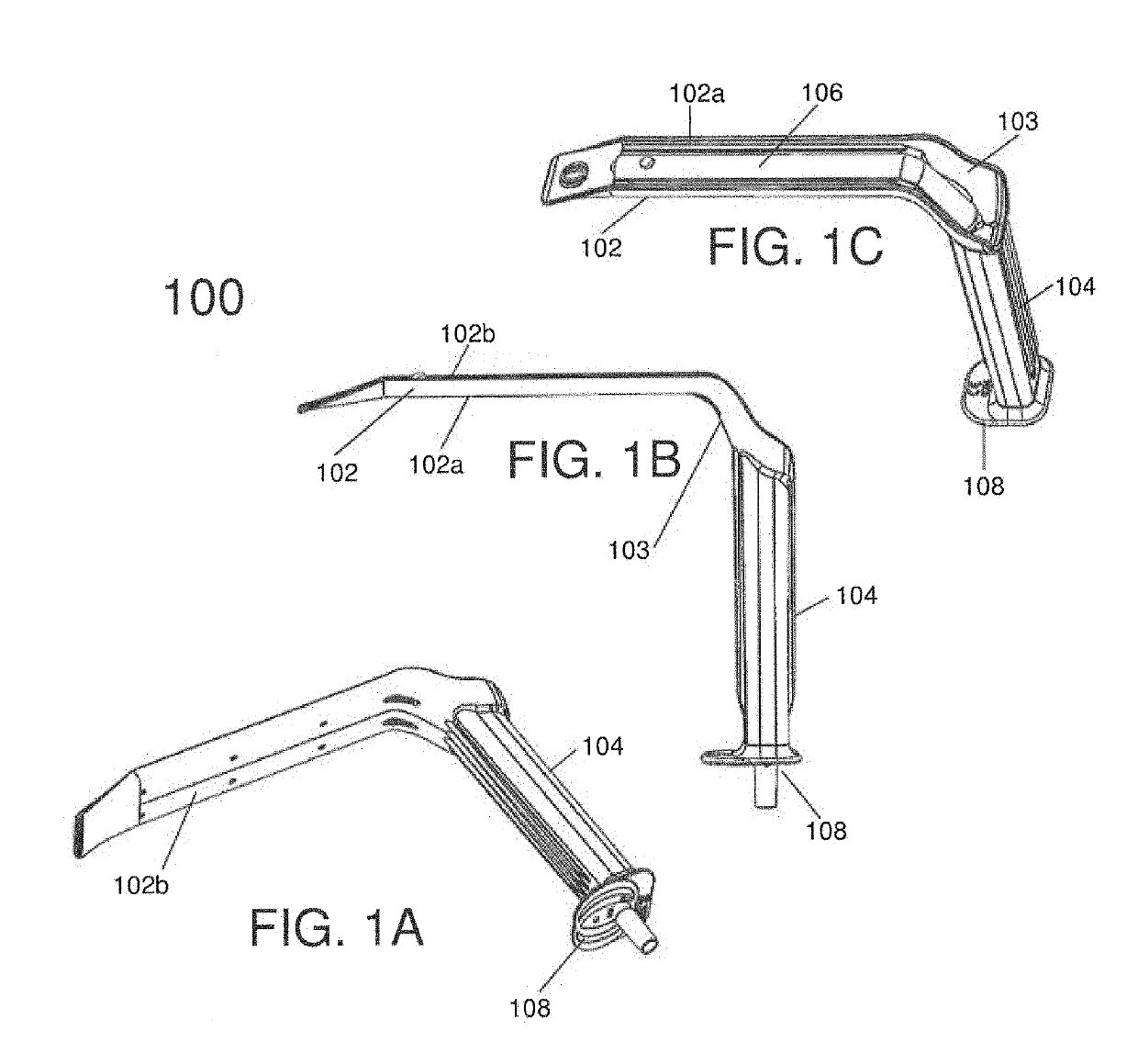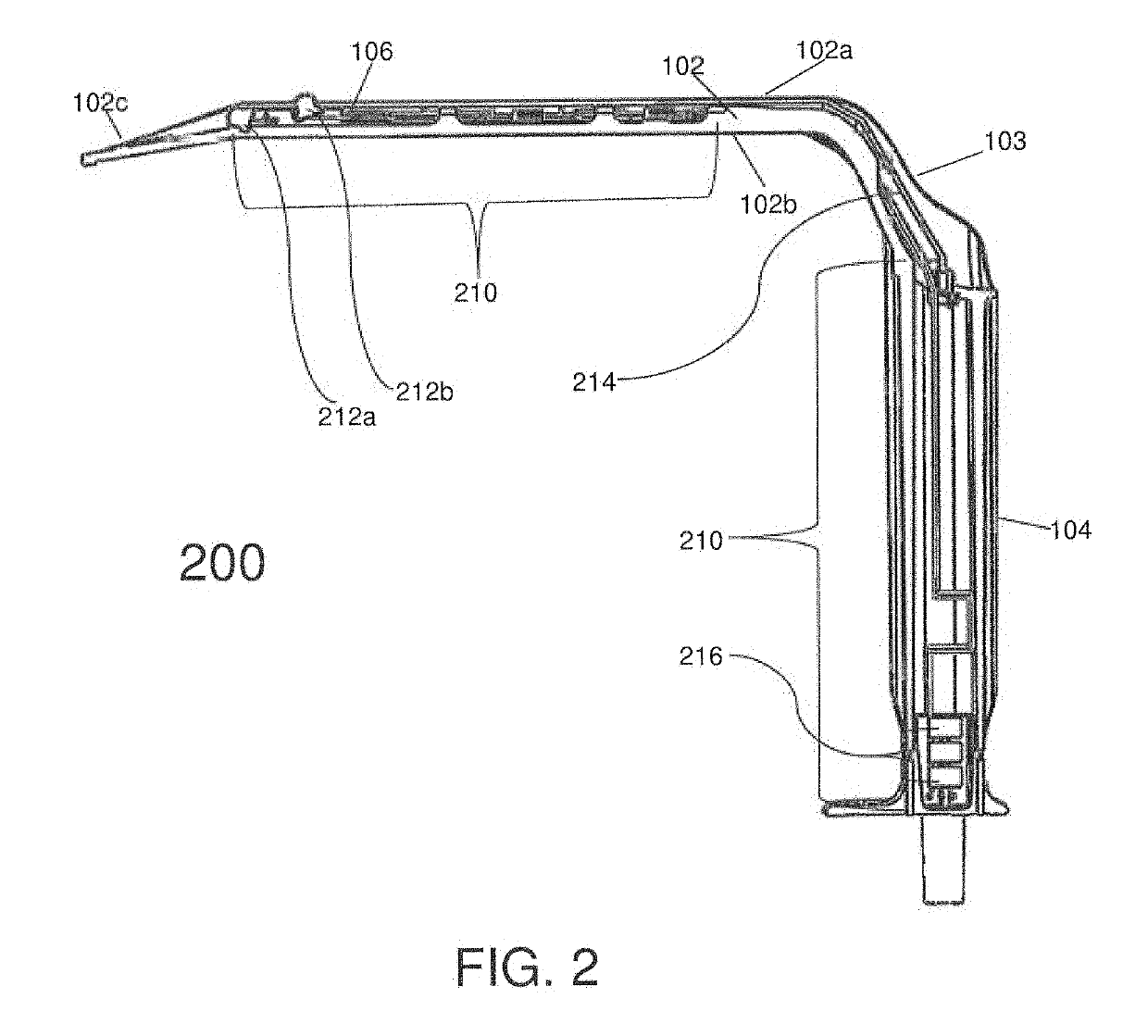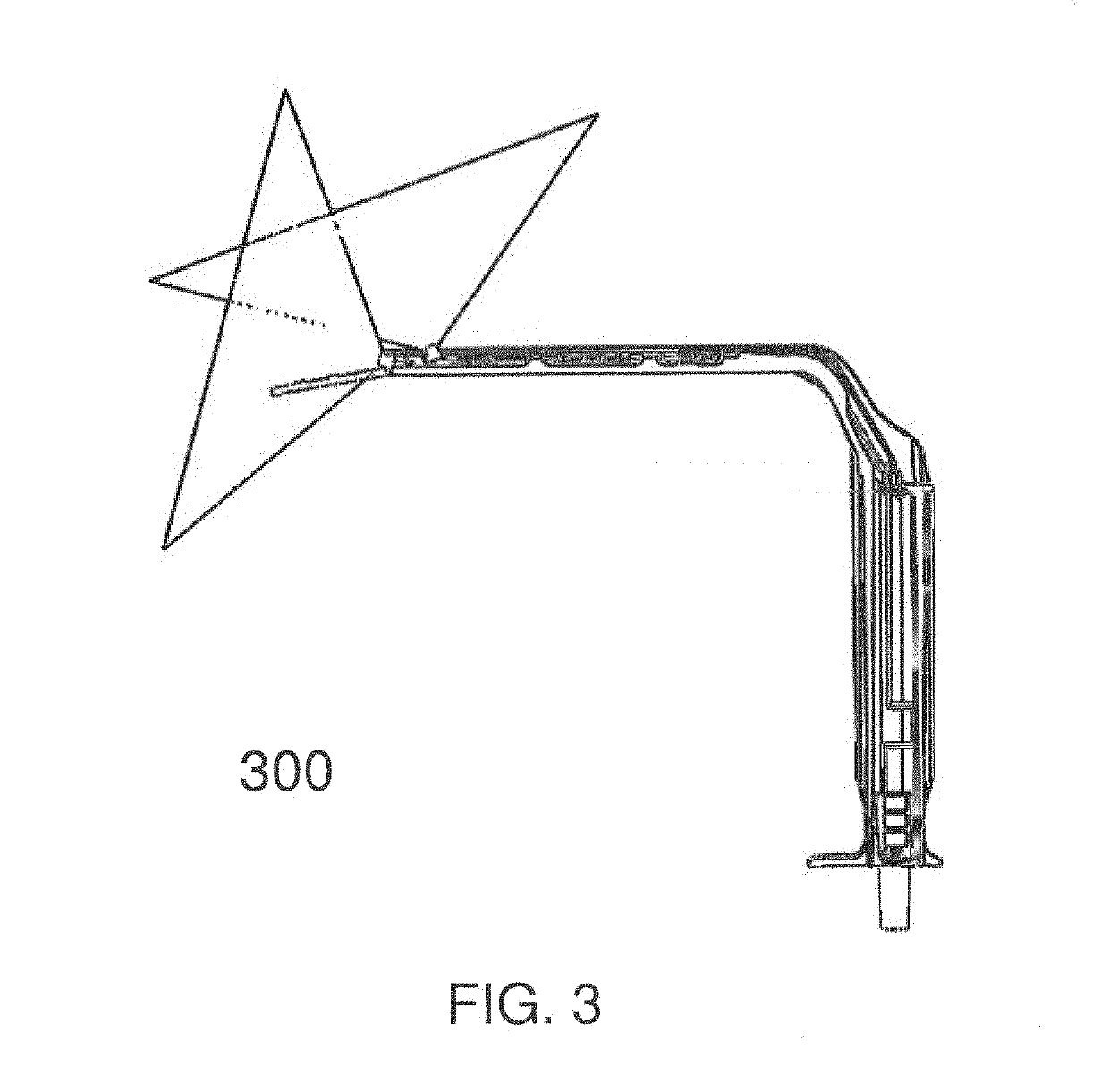Illuminated medical devices
a medical device and illumination technology, applied in the field of medical devices, can solve the problems of not providing sufficient illumination for medical devices, most medical devices with integrated light sources often fail to direct or concentrate illumination to the desired surgical field, and achieve the effects of improving thermal dissipation, simple assembly mechanism, and maximizing illumination and visibility
- Summary
- Abstract
- Description
- Claims
- Application Information
AI Technical Summary
Benefits of technology
Problems solved by technology
Method used
Image
Examples
first embodiment
[0053]Referring to the drawings, FIGS. 1A-1C thereof show different views of a retractor 100 in accordance with the present invention. As shown in these figures, the retractor 100 includes a blade portion 102 having a first (bottom) surface 102a and an opposing second (bottom) surface 102b and a proximal end and a distal end. The proximal end is defined herein as the end of the blade portion closer to a handle of the retractor and the distal end is defined as the tip end of the blade portion opposing the proximal end. The retractor 100 further includes a handle portion 104 that extends from the blade portion 102 at an angle. In this illustrative embodiment, the handle portion 104 is generally perpendicularly joined to the blade portion at the proximal end of the blade portion. In some versions, the angle may vary, for example, at 95°, 100°, 105°, etc., without limiting the scope of the present embodiment. The portion of the retractor 100 where the blade portion 102 and the handle po...
second embodiment
[0087]Notably, the retractor 900 of the second embodiment includes a textured gripping surface 902 formed on the second surface 102b of the blade tip 102c. The textured gripping surface 902 may also be referred herein as a textured non-slip pattern 902. The textured gripping surface 902 provides a non-slip surface to prevent slippage of the retractor against patient's tissue. In one version, the textured gripping surface 902 is formed only on the second surface 902b of the blade. In another version, the textured gripping surface 902 is formed on either or both of the first and second surfaces of the blade. In yet other versions, the textured gripping surface 902 is not limited to the tip of the blade, but may be provided over a portion of the blade's first and / or second surfaces or over the whole first and / or second surface of the blade.
[0088]As shown in FIGS. 9A-9C, the textured gripping surface 902 comprises a plurality of elongated ridges formed on at least a portion of the secon...
fourth embodiment
[0128]FIGS. 16A-D and FIG. 17B show a surgical retractor 1600, 1700 that uses the LED flex circuit 1500b of FIGS. 15B-C. FIGS. 16A-D show the LED circuit 1500b assembly with a retractor blade cover 1606. FIG. 16A is an exploded view of the LED flex circuit 1500b and the retractor blade cover 1606, while FIG. 16B shows the positioning of the LED flex circuit 1500b relative to the blade cover 1606. As shown in these figures, the particular shape, size, and contour of the LED flex circuit 1500b is designed to correspond to a specific position on the retractor blade cover 1606 and to the openings formed in the retractor blade cover 1606. Specifically, the size and positioning of the LEDs and the wings 1604 or tabs and the thickness of the LED flex circuit are designed to smoothly fit with the retractor blade and the retractor blade cover 1606 so as not to impede with other functionalities of the retractor.
[0129]As shown in FIG. 16A, the LEDs 1602 are mounted on portions of the LED circu...
PUM
 Login to View More
Login to View More Abstract
Description
Claims
Application Information
 Login to View More
Login to View More - R&D
- Intellectual Property
- Life Sciences
- Materials
- Tech Scout
- Unparalleled Data Quality
- Higher Quality Content
- 60% Fewer Hallucinations
Browse by: Latest US Patents, China's latest patents, Technical Efficacy Thesaurus, Application Domain, Technology Topic, Popular Technical Reports.
© 2025 PatSnap. All rights reserved.Legal|Privacy policy|Modern Slavery Act Transparency Statement|Sitemap|About US| Contact US: help@patsnap.com



